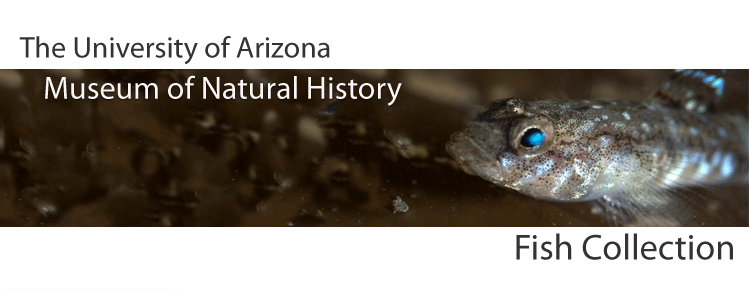Loan requests must be made in writing, and should include a statement explaining the scope of the project and specific use of the material. This statement needs to address any invasive procedures proposed. Any planned destructive methodology (e.g., removing specimen parts, making additional cuts, clearing and staining, or dissection), must be approved in writing in advance of the loan. If permission is granted the borrower for any destructive sampling, any part or parts removed must be labeled with the UAZ catalog number and returned with the specimen. Written requests can be sent via e-mail or letter.
Loans are generally of six months duration. Requests for loan extensions can be made, but must be received in writing before delinquency on the original due date. A range of factors may come into play regarding a given extension request, therefore, requests are granted at the discretion of the University of Arizona. To acknowledge safe receipt of the loan, the borrower must sign, date, and return a copy of the loan invoice. If the specimens have been damaged during shipment, the borrower must report this damage immediately. The borrower is accountable for damages occurring during specimen handling. Smaller loansof more common species may be completed in full with a single installment. Larger loans, or loans of species with limited representation in the collection are typically processed in tandem, with installments of 1/2, 1/3, or even 1/4 the number originally requested. Each installment is mailed out in succession as the previous set of specimens is returned by the borrower. Researchers requesting very large loans or large, unwieldy specimens may be asked to visit the collection facilities.
Loans may not be transferred to other individuals or institutions without prior written permission. Except for loan duration and condition issues, all requests for grants of tissue must follow the outlines for traditional specimens given above. Unlike traditional specimens, however, tissue stocks, by their very nature are eventually depleted with use. Thus, more stringent guidelines have been adopted to help insure that these limited resources are not rapidly exhausted. A proposal outlining the need for specific tissues must be submitted with the grant request. In this proposal, the grantee should state what other means have been employed to acquire the needed tissues, beg, other institutions and / or fieldwork. Requests will be evaluated using criteria such as demonstrated need, quantity of requested tissue in the collection, and relative availability for replacement of like tissues in the collection.
If loaned specimens have been taxonomically re-evaluated, any new nomenclature should be provided to the University of Arizona on the return of the specimens. Any changes should be associated with specific UAZ catalog numbers.
The University of Arizona Fish Collection should be acknowledged in any publications, reports, articles, or theses resulting from use of its specimens or tissues. We also request that two reprints from any publication based, at least in part, on UAZ material besent to the collection for our library.

